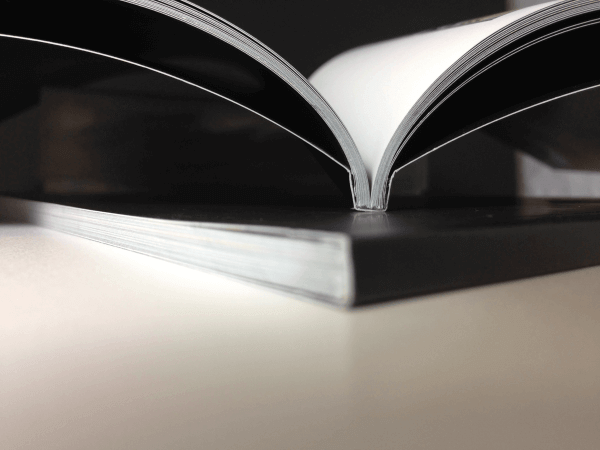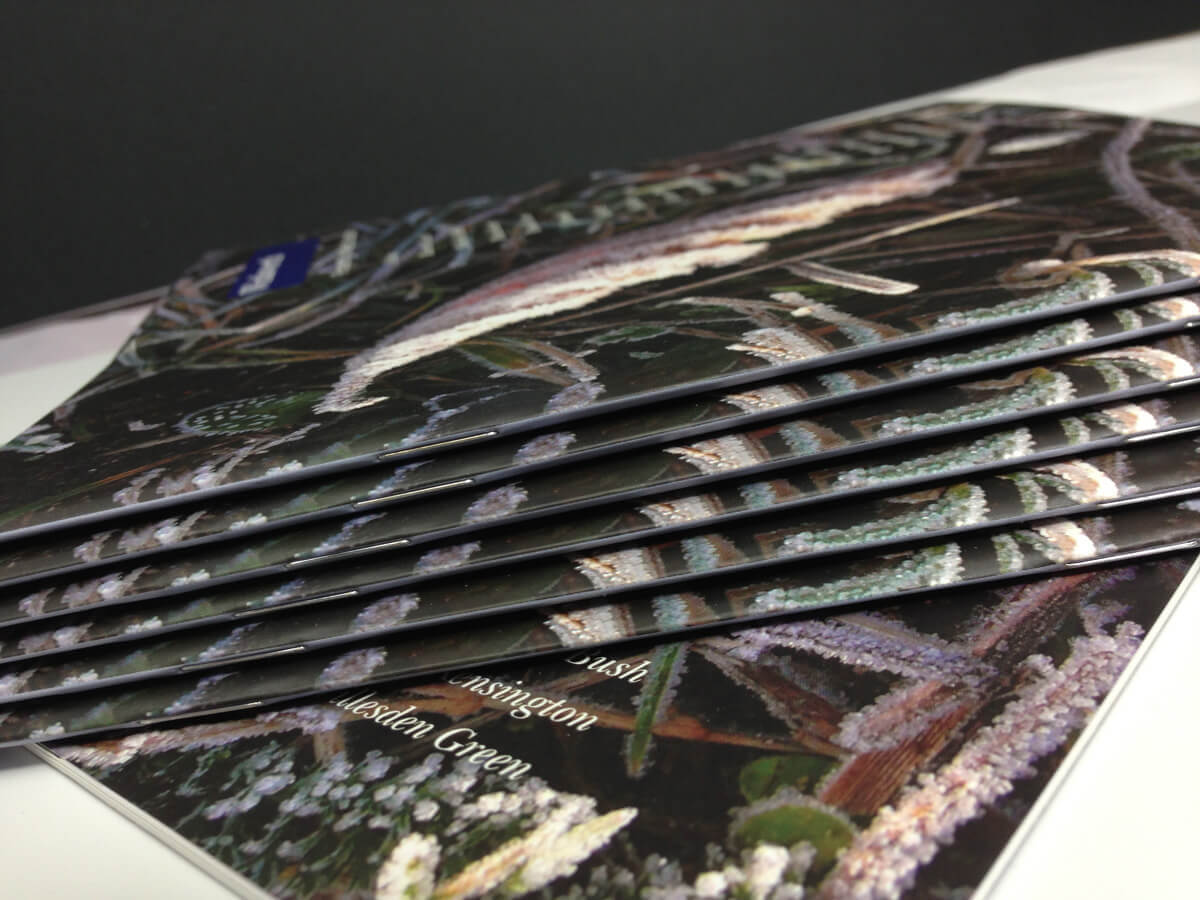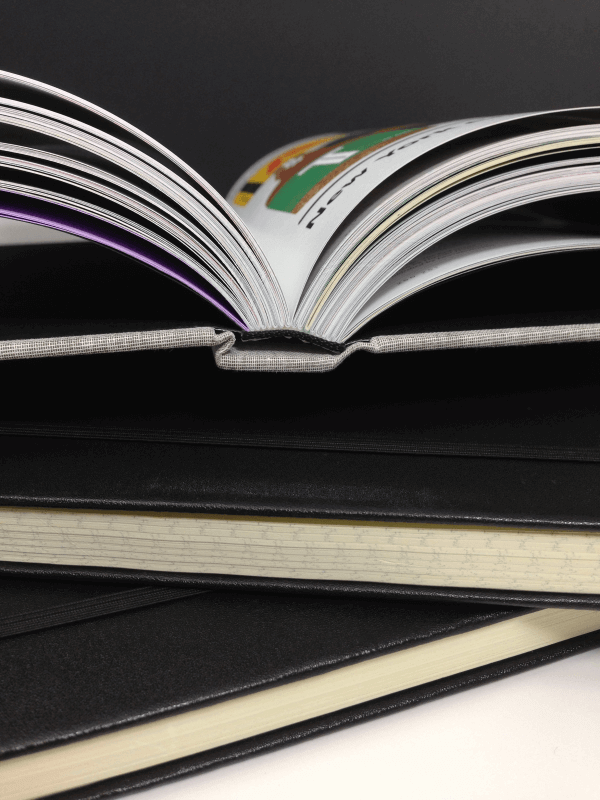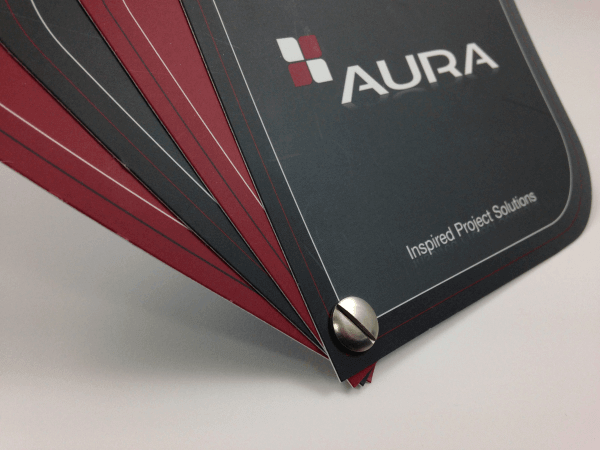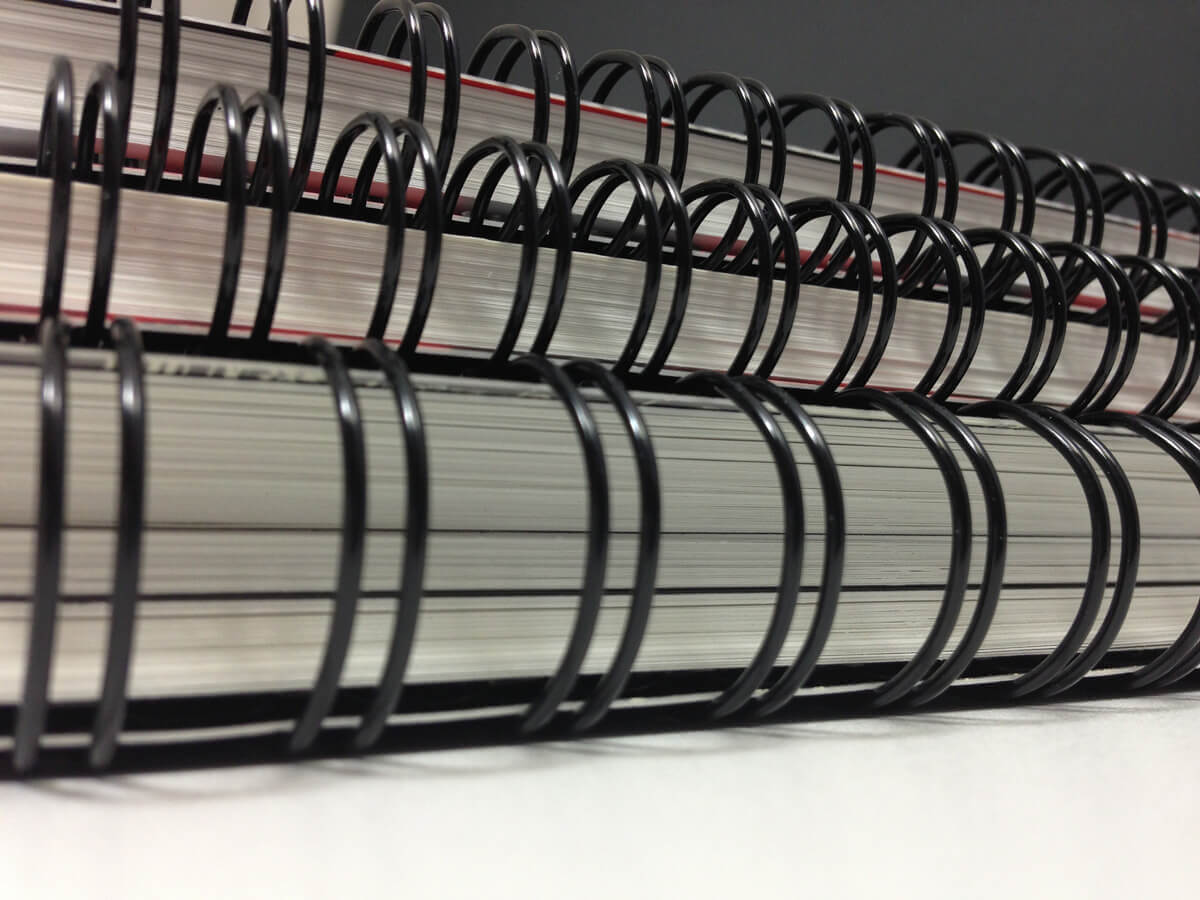Before I joined the team at Proactive I had never given binding a second thought, but if you’re printing a brochure it could be just as important a factor as your paper type to give your project the right look (and budget).
Perfect Binding
Pages are bound to their cover by a strip of adhesive forming a squared edge. The glue does not penetrate deeply into paper fibres therefore the pages of books are cut into a serrate shape to allow more surface area for the adhesive.
Advantages:
- High quality look, good for brochures with large amounts of pages.
- Cheaper than case binding
Disadvantages:
- Spine can be damaged easily with heavy use. Doesn’t open out flat
PUR Binding is a type of perfect binding using polyurethane adhesive which is put onto the pages whilst hot and then cools to harden. Because of this, it can withstand wider temperature extremes than other adhesives used by perfect binding and is also a good method for collating difficult paper types, for example UV or aqueous coated.
Saddle Stitch
Often folded inner pages are inserted into a folded cover and then stapled through the fold.
Advantages:
- Has a fast turnaround time compared with other methods of binding
- Can accommodate artwork that spreads across 2 whole printed pages
- Is more economical than some other methods as you are only using one sheet for every four printed pages
Disadvantages:
- Adding folded sheets inside each other in this way causes the pages progressively creep away from the spine each time a sheet is inserted. The more pages you have, the more prevalent this becomes.
- The pages can also ‘bow out’ from the spine, which is a term for when the pages tend not to lie completely flat when closed.
Case Binding
This method is used for projects with a high number of pages, as they are divided into sections of 8 or 16 pages, sewn together and then glued to the cover.
Advantages:
- This method makes the spine very durable and is often use for high-use items such as reference books
Disadvantages:
- One of the most costly finishing methods
Side Stitched (or stab stitched)
Staples are applied through the all pages down one edge which will become the spine.
Advantages:
- Strong bind which is popular for calendars or notepads where there is room for perforation to allow a tear off.
- Offers single sheet insertion (multiples of 2 printed pages)
- Can be used to reinforce perfect bound items
Disadvantages:
- Publication will not be able to lie flat. Not the tidiest finish.
Post binding
This method utilises screws in a similar way to a side stitched binding along one side of the pages.
Advantages:
- Allows for dismantling and adding or removing of pages and therefore popular for presentations or albums.
Mechanical Binding
Spiral Wire, Plastic Comb & Wire-O
A coiled spiral or loops are screwed through holes punched down the spine of the publication and is available in a range of colours and sizes.
Advantages:
- Pages can lie flat and turn with ease.
- Pages can often be added or removed after finishing
Disadvantages:
- Costs can be expensive, especially on higher quantities
If you’d like to talk to someone about binding, request some samples or get a quote….

